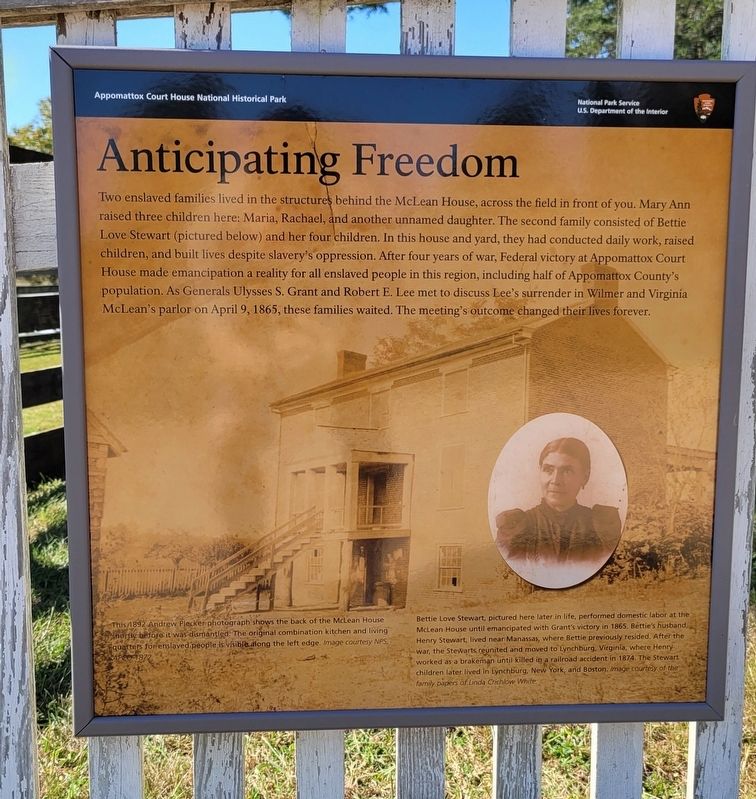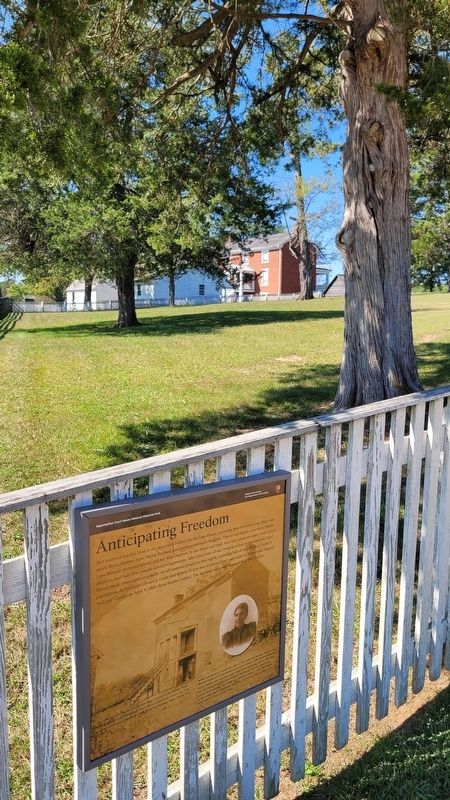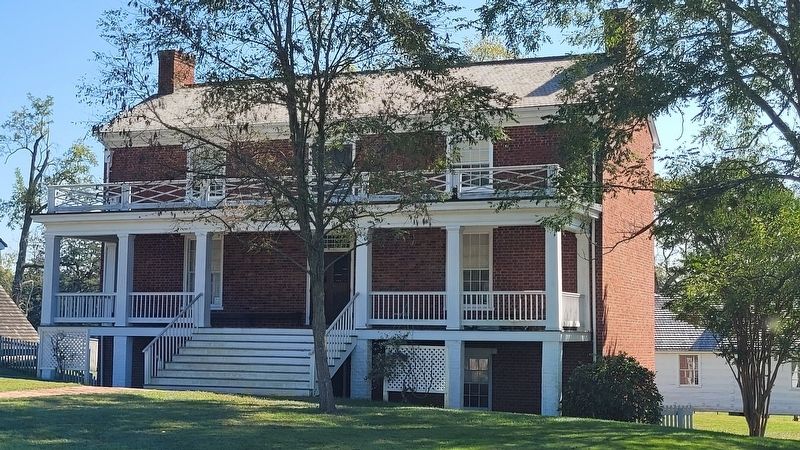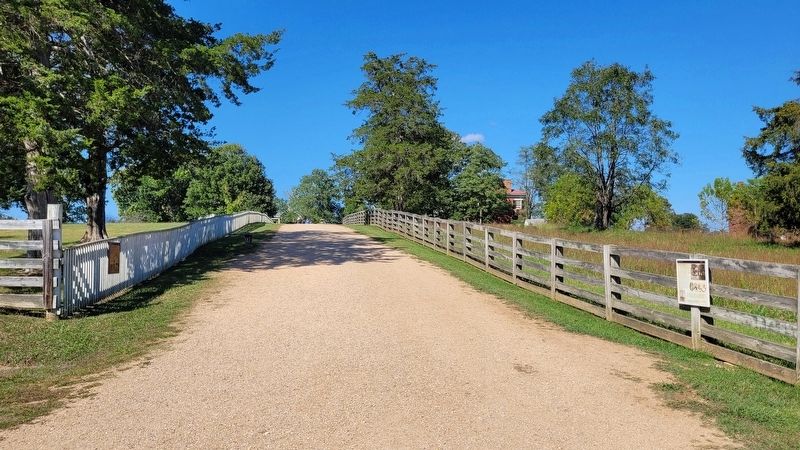Appomattox in Appomattox County, Virginia — The American South (Mid-Atlantic)
Anticipating Freedom
Captions
Lower Left: This 1892 Andrew Plecker photograph shows the back of the McLean House shortly before it was dismantled. The original combination kitchen and living quarters for enslaved people is visible along the left edge. Image courtesy NPS.
Lower Right: Bettie Love Stewart, pictured here later in life, performed domestic labor at the McLean House until emancipated with Grant's victory in 1865. Bettie's husband, Henry Stewart, lived near Manassas, where Bettie previously resided. After the war, the Stewarts reunited and moved to Lynchburg, Virginia, where Henry worked as a brakeman until killed in a railroad accident in 1874. The Stewart children later lived in Lynchburg, New York, and Boston. Image courtesy of the family papers of Linda Crichlow White.
Erected by Appomattox Court House National Historical Park, National Park Service, U.S. Department of the Interior.
Topics. This historical marker is listed in this topic list: War, US Civil. A significant historical date for this entry is April 9, 1865.
Location. 37° 22.595′ N, 78° 47.788′ W. Marker is in Appomattox, Virginia, in Appomattox County. Marker is on National Park Drive, 0.2 miles north of Old Courthouse Road (Virginia Route 24), on the left when traveling north. The marker is located along the walking trail to the courthouse. Touch for map. Marker is at or near this postal address: 111 National Park Drive, Appomattox VA 24522, United States of America. Touch for directions.
Other nearby markers. At least 8 other markers are within walking distance of this marker. The Isbell House (a few steps from this marker); Appomattox Court House (within shouting distance of this marker); April 1865 (within shouting distance of this marker); McLean House (about 400 feet away, measured in a direct line); County Jail (about 500 feet away); Clover Hill Tavern (about 500 feet away); Lafayette W. Meeks (about 700 feet away); Tibbs Lane (approx. 0.2 miles away). Touch for a list and map of all markers in Appomattox.
Also see . . .
1. The McLean House - Site of the Surrender. Appomattox Court House National Historical Park
The McLeans left Appomattox Court House and returned to Mrs. McLean's Prince William County, Virginia estate in the fall of 1867. When Wilmer McLean defaulted on repayment of loans, the banking house of Harrison, Goddin, and Apperson of Richmond, Virginia brought a judgment against him, and the "Surrender House" was sold at public auction on November 29, 1869. The house was purchased by John L. Pascoe and apparently rented to the Ragland family formerly of Richmond.(Submitted on October 18, 2023, by James Hulse of Medina, Texas.)
2. Enslaved Peoples’ Quarters/Summer Kitchen. Appomattox Court House National Historical Park
At least nine enslaved people lived in the small white buildings behind the McLean House at the time of the surrender. Bettie Love Stewart and her four children worked alongside Mary Ann and her three children as caretakers of the McLean home. In addition to cooking the family’s meals, they took care of the McLean children, maintained the house, and looked after the family’s animals. Emancipation brought a mixture of hope and uncertainty for formerly enslaved people in the wake of Lee’s surrender.(Submitted on October 18, 2023, by James Hulse of Medina, Texas.)
Credits. This page was last revised on October 18, 2023. It was originally submitted on October 18, 2023, by James Hulse of Medina, Texas. This page has been viewed 121 times since then and 64 times this year. Photos: 1, 2, 3, 4. submitted on October 18, 2023, by James Hulse of Medina, Texas.



